The New Hampshire Dealers Association Show, 2105
August 8th, 2015
|
This Pennsylvania schoolhouse quilt in fine unwashed condition, circa 1890, was $5950 from Richard Axtell of Deposit, New York. It sold and was replaced at the show with a similar one.
This mahogany chest of drawers, made in coastal New Hampshire, 1800-10, is by an unidentified maker whose works are in New Hampshire institutions and historical houses. The dressing slide is a rare feature, and it has its original hardware. Peter Sawyer asked $16,500 for it, and it sold. The tall-case clock by John Bailey, Hanover, Massachusetts, was $18,500. It has minimal restoration and an old surface.
Arthur Liverant of Nathan Liverant and Son, Colchester, Connecticut, had his signature wall of child-size chairs, priced from $3000 for the red-painted highchair (left) to $16,500 for the continuous-arm Windsor highchair painted green (right).
It was a banner year for James and Judith Milne’s At Home Antiques, Kingston, New York. They had more than half a dozen banner weathervanes, priced from $1650 to $3550. The largest (center) was $2250; and the one with the star, $3250. They sold to their walls.
Jeff Cherry and Kass Hogan of Cherry Gallery, Damariscotta, Maine, offered a large needlework tapestry for $3400; the Old Hickory hoop-arm settee under it was $1800; the mosaic planter, $975; the red, yellow, and green cupboard, $1250; and the horn chair, probably Swiss, late 19th century, was $3400. They nearly sold out and restocked the following day.
Dennis Berard of Dennis and Dad Antiques, Fitzwilliam, New Hampshire, asked $15,500 for this mocha pitcher, 7½" high. He said large tobacco leaf mocha pitchers are hard to find.
Douglas Solliday asked $6500 for the New Hampshire chest, red grained with smoke-decorated drawer fronts outlined in green and black and with oval marbleized paterae. The tramp art frame has dates of important milestones as part of its design. It was $2700. The black-and-white barber pole was $1000, and the medallion with agrarian symbols, a bee skep, a tobacco knife, and a pomegranate was $3500. |
New Hampshire Antiques Show, Manchester, New Hampshire
Antiques Week in New Hampshire, the first week of August, is a grand gathering of those passionate about Americana. For more than half a century—this was the 58th New Hampshire Antiques Show—collectors, dealers, curators, and antiquarians have come to New Hampshire in midsummer to go antiquing. Friendships are made here, business is done, and good times are remembered.
Each year is a bit different than the last. Four shows now stretch from Concord and Deerfield to suburban Manchester, but the center of it all, the magnet that created New Hampshire Antiques Week, is the New Hampshire Antiques Dealers Association (NHADA) annual show held at the Radisson Hotel on Elm Street in the center of downtown Manchester.
The dealers’ show—as it is called by most people—has the longest lines, the fastest pace, the biggest buzz, and the most sales. “There is something magic about this show,” said Beverly Weir-Longacre, who with Joshua Steenburgh cochaired the show, held August 6-8. Longacre has had her job for a decade. She learned the ropes from her predecessor, Gail Piatt. While Steenburgh deals with the hotel and security and pays the bills, Longacre is the project manager who sees that stands are built and wired. All of the dealers must be members of the New Hampshire Antiques Dealers Association, and many of them, like Longacre and Steenburgh, work hard as volunteers to make this show happen. There is a real sense of community and fellowship that has been passed down from generation to generation.
It seems like a love feast. The dealers, who are very competitive, appear to love each other. They love what they own, they love what they sell, and, best of all, they love doing business with each other during setup.
The time of year has something to do with the success of this show. Shoppers are on vacation, and they are relaxed; they are there to meet old friends, make new ones, and eat good food. (There are some new farm-to-table restaurants in Manchester. The oysters and lobster rolls at the Bedford Village Inn, breakfast, at least once, at the Red Arrow Diner, and a fancy dinner at the Hanover Street Chophouse are a must.)
The crowd comes to buy. This year, with no Philadelphia Antiques Show, collectors were keen for a fix. They did not want to leave without buying something, and they found every kind of Americana as well as some things made in England but used here.
This show has changed little over the years. That’s because if a folk art dealer leaves the show he or she is replaced with a folk art dealer; if a pewter or silver dealer leaves, the search is on for a pewter or silver dealer. “We try to have formal furniture and country; we look for a balance,” said Longacre. The show is heavily weighted toward local New Hampshire dealers, but there are dealers from southern New England, the middle states, the Midwest, and one from California. Some dealers show at the prestigious New York Winter Antiques Show and upscale shows in Philadelphia and Delaware, but others do only this show. Many dealers have been in the same spot for more than 30 years; their customers know where to find them. Others moved their stands this year. There were only four spots to fill—four dealers had health problems and took a year off. They may or may not return. The dealers new to this show included Kelly Kinzle of New Oxford, Pennsylvania, who specializes in Pennsylvania material, Kentucky rifles, and some New England rarities. He sold a rare girandole clock made by Lemuel Curtis, Concord, Massachusetts, in 1816. Its $190,000 price tag made it the most expensive item sold this year at the show. His $240,000 Kentucky rifle, inlaid with white, yellow, and rose gold, silver, and brass was deemed the masterpiece of the show.
Garrett and Anne Rowe, specialists in garden antiques, exhibit at the New York Botanical Garden show and were new exhibitors this year at the dealers’ show. They nearly sold out of English garden antiques. Barbara Boardman Johnson calls her business in Enfield, New Hampshire, Pewter & Wood. It is open May through October, and she also has a shop in Arizona open November to April. She does shows in Pennsylvania and New England and brings mostly painted furniture and accessories. Tim and Charline Chambers are Missouri Plain Folk. They bring material they find in rural communities in the Midwest, including country furniture and folk art with an emphasis on color and form. They have published a book on game boards.
The show seems to be a perfect size—68 dealers. But what makes it the briskest selling show of the week? It is the last to open after three other shows have competed for business, yet this show attracts the most spenders. Not everything is very expensive; prices are lower now.
“I come here to compete,” said Peter Sawyer of Exeter, New Hampshire. “Some dealers raise their prices for a show; I lower mine. I want to sell more than anyone else.” He did. By noon the first day he had sold a pair of chairs, a dwarf clock, a bowfront chest, a carousel horse, two oil paintings, a weathervane, and a high chest. “The fellow who bought the high chest for $7500 said he had been looking for the right one for five years, and mine was finally within his price range,” said Sawyer. By the end of the show Sawyer had sold another clock and a lot more.
“We start saving for this show the day the show ends,” said Newcastle, Maine, folk art dealer Charles “Butch” Berdan of Jewett-Berdan. “For us, it is the most important show of the year.”
Several dealers said they made 40 or 50 sales. Hollis Brodrick of Portsmouth had made 30 sales in the first hour. Edwin Hild and Patrick Bell of Olde Hope Antiques, New Hope, Pennsylvania, know what to bring. They sold weathervanes, folk portraits, painted boxes, textiles, and tin. Philadelphia dealer Amy Finkel sold needlework. She said she did not sell her most expensive samplers, but she sold others to clients who appreciated paying no sales tax in New Hampshire. Melvyn and Bette Wolf of Flint, Michigan, said they sold 50 pieces of pewter and had their best total sales ever at any show. Bev Norwood of Norwoods’ Spirit of America, who sells folk art, said it was her best New Hampshire show and her second-best show ever. Jeff and Holly Noordsy of Vermont sold glass and folk art, and they had a very good show, but they went home with most of their very best things, as did some other dealers. Some dealers restocked. The show looked quite different on Friday and Saturday. Only a few dealers said business was not as good as last year.
The show is great PR for New Hampshire. NHADA publishes a guide to all the antiques shops in the state and lists all the members of the association; not all members are residents of New Hampshire. Members pay dues and may or may not get to any of the association’s meetings held in Concord. Many dealers join the association hoping for an invitation to show.
Shoppers who do not go home with a treasure leave with dreams about what they wished they had bought such as the “Rabbit Crossing” sign from Gail and Don Piatt with great graphics and a rich patina, or the sculptural tenth-anniversary tin high-button shoe from Barbara Pollack, or the “Soles Saved While You Wait” cobbler’s sign from Jewett-Berdan; it made people laugh. Or maybe the big balls of string from Stella Rubin or the smaller balls of string from Pewter & Wood. They look like modern sculpture and seem to be symbolic of the long line of dealers and show managers who make this show a tradition that brings so much fun into people’s lives.
For more information, go to (www.nhada.org).
|
|
|
|
Originally published in the October 2015 issue of Maine Antique Digest. © 2015 Maine Antique Digest





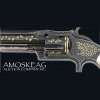








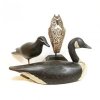

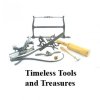

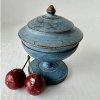

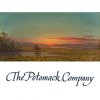




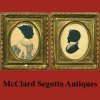







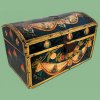
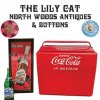


















 Hollis Brodrick of Portsmouth, New Hampshire, said he made 30 sales in the first 30 minutes. His booth was crowded. “People said I’ll take it, put a sold sign on it, and said I’ll be back to pay. I sent out sixty free tickets,” he said. A set of four English cane-back chairs, circa 1690, had belonged to the Mayflower Society for 100 years; they were $3800. One has a replaced seat frame.
Hollis Brodrick of Portsmouth, New Hampshire, said he made 30 sales in the first 30 minutes. His booth was crowded. “People said I’ll take it, put a sold sign on it, and said I’ll be back to pay. I sent out sixty free tickets,” he said. A set of four English cane-back chairs, circa 1690, had belonged to the Mayflower Society for 100 years; they were $3800. One has a replaced seat frame. Betty Berdan thought the weathervane of a woman hanging clothes was made by Kenneth Lynch of Connecticut, circa 1925. It was $4500. The polychrome tape loom, dated 1807, was $2300 from Newsom & Berdan, Thomasville, Pennsylvania.
Betty Berdan thought the weathervane of a woman hanging clothes was made by Kenneth Lynch of Connecticut, circa 1925. It was $4500. The polychrome tape loom, dated 1807, was $2300 from Newsom & Berdan, Thomasville, Pennsylvania.







